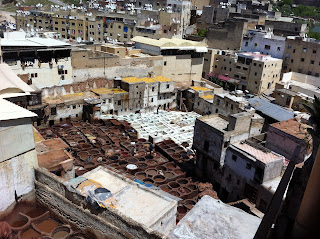Some Thoughts on the Republican National Convention
Mitt Romney's Acceptance Speech
Living in Spain the
last year and a half has given me an interesting approach on American
politics. Here I’m not inundated by the
media and its inevitable slant on the issues.
I don’t typically watch the news
(it’s in Spanish after all). Most of my
information comes from three sources, the ridiculous crap that people post on Face
book, my AOL homepage, and my periodic browsing of CNN.com. With that in mind, I sat down this morning
and watched the two keynote speeches at last night’s RNC.
Before we get started on
my impressions, I do have a few things I need to share. While I don’t consider myself a diehard, I do
usually lean towards the left. I find
that the values associated with Liberal thinkers appeal to me more than those
of the more hardcore Conservatives. That
said, I would vote for a Republican candidate. Especially if I felt that they
were the better candidate and that they would do what was in the best interest
of all the people and not just their party supporters, lobbyists, and campaign
contributors. I don’t identify myself
with the swing vote, but for the right candidate I could be swayed.
Another disclaimer that
I need to make is that I voted for the president in 2008. I fully believed in what he represented both
historically and from a policy standpoint.
At the time of his election, President Obama had fresh ideas and a plan
to put the country back on track. Unfortunately,
things haven’t gone as planned. One
could easily argue that the country and its people are no better off today than
they were at the end of the Bush administration. This is what I find most troubling. Things were bad under President Bush, and now
with a completely different party, executive, philosophy, etc…, things really
haven’t changed for the better. While
you could argue one way or the other WHY this has happened, that’s not my
intention in this blog.
So with these things in
mind, I sat down and watched the speeches of Clint Eastwood and Mitt
Romney. The Eastwood speech was
interesting…. He seemed to ramble and at times became incoherent. I think in hindsight it will stick out more
as a publicity stunt than anything with any real substance. I was also a little bothered by the whole
empty chair routine. In all I found the
whole thing pretty bizarre.
Clint Eastwood's Speech
In sharp contrast to
the speech of Eastwood was that delivered by Mitt Romney. For roughly the first 25-30 minutes of the
speech, I actually found myself drawn in and impressed with Romney. He has an interesting story, his father is
self-made, he has Midwesterner roots, and a likable family. I really thought this part of his speech was a positive
step away from the wishy-washy career politician label that I had previously
heard attached to him. To summarize, I found him likable.
Unfortunately, the
speech wouldn’t maintain this feeling.
After an incredibly positive and balanced beginning, the type of beginning
that “swing” voters are looking for, the second part of the speech took on a
much darker tone. It was during this
second part that I felt Romney began to pander to the more radical wing of the
party.
My question is this,
why do the Republicans feel the need to cow tow to the radical fringe that call
themselves the Tea Party? How do they
ever expect to attract a mainstream middle of the road voter while they
tolerate the bigotry and ignorance of the Sarah Palins, Michele Bachmans, and
Todd Akins of the world? These people
are dangerous and frankly, their views do not mesh with the 90% of the population. I think the Republicans would be much more
successful if they embraced a middle of the road conservatism and shunned these
right-wing radical nutcases. Do they
really believe that “legitimate rape” doesn’t cause pregnancy (Todd Akin), that
all wives should be submissive to their husbands (Michele Bachman), that abortions
should be illegal even in the event of a rape (Sarah Palin), or even that gays should be denied the same rights that the rest of us are granted in a FREE country (Paul Ryan), a country that prides itself on the ideal of life, liberty, and the pursuit of happiness. Did I miss the class in U.S. History where they said that this only applies if your pursuit of happiness is the same as theirs?
If you look at two of
the more successful campaigns in the last thirty years, the Reagan Democrats
and the Clinton Conservative delivered landslide victories for their
candidates. It would be really nice to
see either the Republicans or the Democrats return to this strategy of unifying
instead of dividing. In the end, it’s
going to take compromise and partnerships to pull us out of this mess, not name
calling and divisiveness.
















































